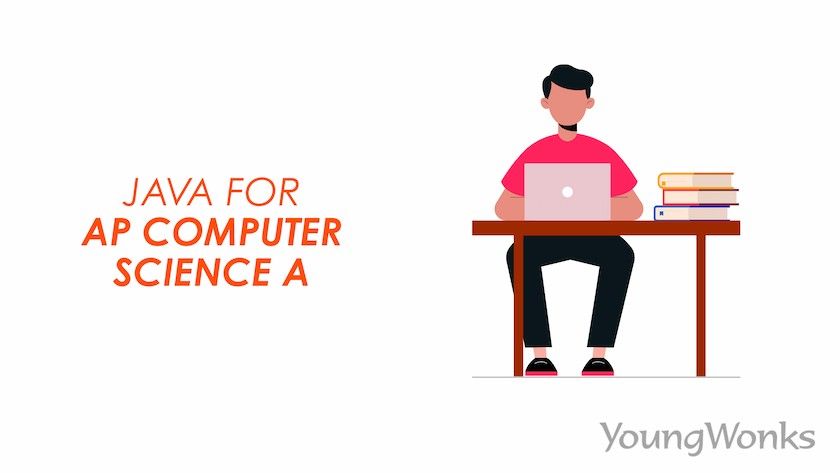Feb 20, 2023 By Team YoungWonks *
Introduction to Java Programming Language
Java is one of the most popular programming languages in the world, used for everything from web applications to mobile apps and more. It was developed by Sun Microsystems in 1995 and has since become an integral part of many businesses' software development strategies. Java is an object-oriented language that is designed to be easy to learn and use, making it a great choice for beginners as well as experienced programmers of computer science. With its powerful features, scalability, security, and platform independence, Java provides developers with a robust set of tools for building dynamic applications that can run on any device or operating system.
Is it difficult to learn Java?
The answer to whether Java is difficult to learn depends on a variety of factors. For those who are already familiar with other programming languages, the syntax and general structure of Java can be relatively easy to learn. However, for those with no prior programming experience, it can be more challenging as certain concepts must be understood first before tackling more complex tasks. In addition, Java is a large language that contains many libraries and functions, so mastering all of these tools can take considerable time. Nonetheless, with practice and dedication, it is possible to learn Java and become proficient in developing computer science applications.
What is AP Computer Science A?
AP Computer Science A is one of the most popular and comprehensive introductory computer science courses by the College Board. It provides students with an introduction to the basics of programming and problem-solving, as well as an understanding of the relationship between software, hardware, algorithms, and data structures. Additionally, it covers topics such as object-oriented programming and fundamentals of computing. By taking this college board course, students can gain a strong foundation in the principles and practice of computer science, as well as develop the skills necessary to create software applications. AP Computer Science A is a great way for aspiring programmers to learn Java and start the development of their own projects. It is meant to be the equivalent of a first-semester college course in computer science.
Is AP Computer Science A worth it?
AP Computer Science A is certainly worth it for many aspiring programmers. Taking the course provides an excellent introduction to the world of computer science and the fundamentals of programming, which can be invaluable skills in today's increasingly digital world. It also offers a strong foundation in object-oriented programming and data structures, as well as an understanding of algorithms and software design. By taking the course, students can improve their understanding of Java and start to develop real-world applications. All in all, AP Computer Science A is a great way for those interested in programming to get started learning Java.
This course is intended for students in grades 9-12. However, students in grades 6-8 can take AP CSA to learn Java and software engineering concepts and then take the AP CSA Exam in high school.
How long is the AP Java exam?
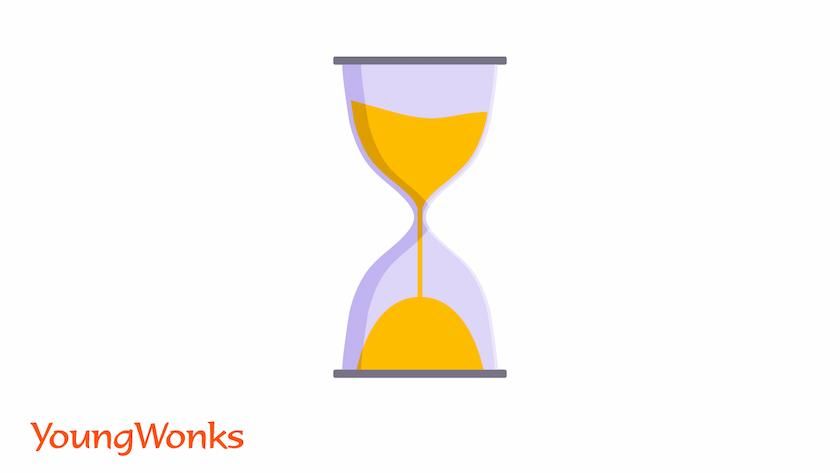
The AP Java exam is typically a 180-minute-long assessment. It begins with a 90-minute multiple-choice section that assesses the student's understanding of fundamental concepts such as classes, inheritance, data structures, data abstraction, algorithms for sorting and searching, complexity analysis, and recursion. This is followed by a 90-minute free-response section where students must write code in Java language to solve complex problems. The exam is graded based on correctness, style, and documentation. Those who receive a score of 3 or above can potentially earn college credit for their AP coursework.
What do you learn in AP Java?
In AP Java, students learn the fundamentals of object-oriented programming, including classes and objects, inheritance, data abstraction, and polymorphism. They understand data structures such as linked lists and stacks, as well as the implementation of algorithms for sorting and searching. Additionally, they become familiar with important concepts such as recursion and complexity analysis. Students also learn important best practices and design principles for developing software applications. Finally, they can create their own projects in Java language that can run on any device or operating system. With these skills, students can develop the knowledge and confidence to pursue a career in programming or software development.
What is taught in AP CSA?
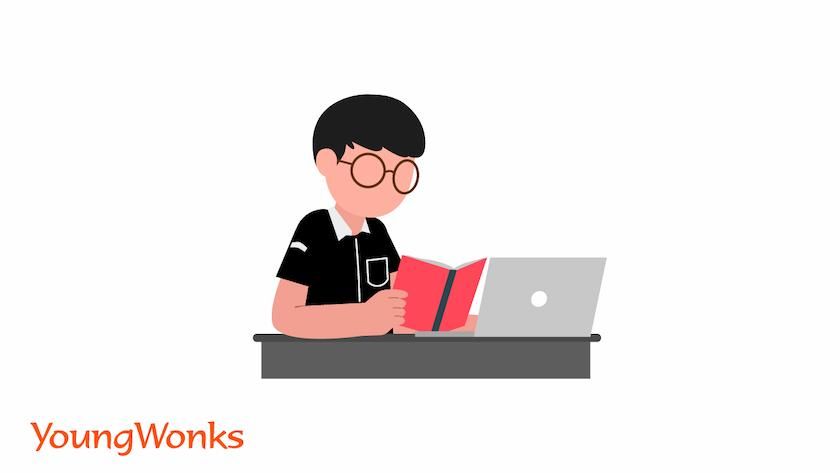
Through AP Computer Science A college board course, students gain a strong foundation in the principles and practice of computer science while developing the skills necessary for software engineering. In this section, we'll explore every unit that contributes to the AP Computer Science A exam. Whether it's understanding data structures or basic Java code, you'll get a comprehensive overview of what is required for success in the exam!
Unit 1: Primitive Types
In Java, primitive data types are used to represent basic values. Primitives are the most basic building blocks of a programming language and they perform operations like addition, subtraction, multiplication, and division.
Primitives can be divided into two categories:
- numeric primitives
- non-numeric primitives
Numeric primitives include byte, short, int, long, float, and double. Non-numeric primitives include boolean values (true/false) and characters.
There are eight primitive types, but not all of them are part of the AP Computer Science A course. The three primitive data types used in this course are int, double, and boolean.
Java program that makes use of primitive types:
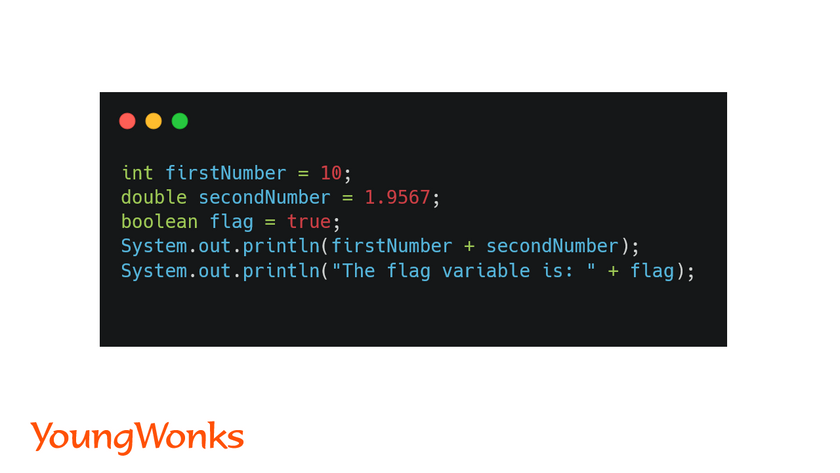
Unit 2: Using Objects
This unit covers the concept of objects and their use in programming. Objects are defined as collections of data, or variables, and methods, which are blocks of code that perform operations on those variables. Object-oriented programming is based on the idea that objects can interact with each other by sending messages, allowing for complex behaviors to be created.
Students taking the AP Computer Science A exam also learn about references, data abstraction, and standard libraries that can be used in their object-oriented programs. For example, they can easily convert string objects into lowercase using the toLowerCase() method. This method takes a string as input and returns the same string in all lowercase letters. By using this simple one-line solution, students can quickly and easily convert string objects into their lowercase equivalent without having to worry about manual conversion errors.
Unit 3: Boolean Expressions and if Statements
Boolean expressions and if statements are powerful tools used in Java code. Boolean expressions are boolean values (true or false) combined with comparison operations, such as less than (<), greater than (>), and equal to (==). These values and operations can be used in conditional statements to control the flow of program code execution.
The most commonly used conditional statements are the if-else statements that contain two parts: an expression followed by a set of commands that should be executed if the expression is true, and a set of commands that should be executed if the expression is false.
Java program of an if-else statement:

Unit 4: Iteration: For Loops and While Loops
Loops are used to execute a set of statements multiple times until a certain condition is met. There are two types of loops covered in the AP CSA course:
- for loops
- while loops
For Loops
In the Java programming language, for loops are written according to this format:

The initialization statement is executed before the loop starts and is typically used to declare and initialize a variable. The condition is evaluated at the beginning of each iteration and if it evaluates to be true, the code block will be executed. If it is evaluated to be false, the loop will terminate. The increment statement is run after each iteration and typically increments or decrements a counter used in the condition. For example, to print integers from 1 to 10, the following Java program can be considered:
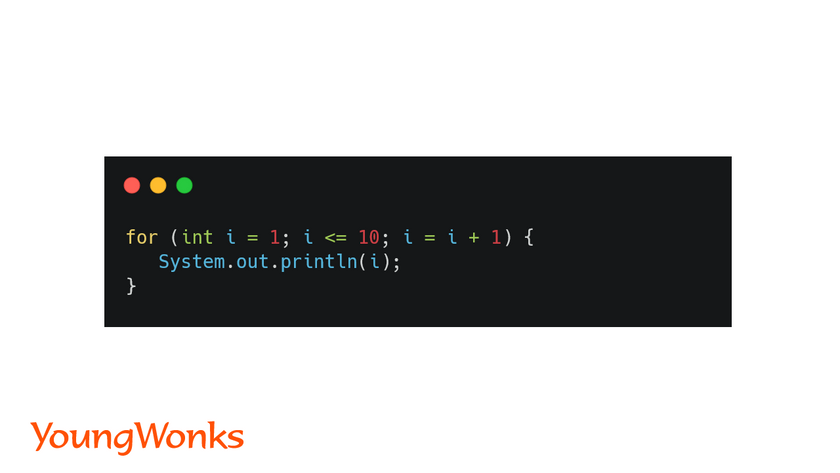
Generally, for loops are used when lines of code need to be repeated a certain number of times.
While Loops
While loops check if something is true or false at the start of each iteration and will keep repeating as long as it's true. The while loops are used when the program code does not need to run a certain number of times.
Writing while loops is straightforward. Here is the code that shows the format:

In the following program, we are using a while loop to iterate through each number until we find five consecutive even numbers.
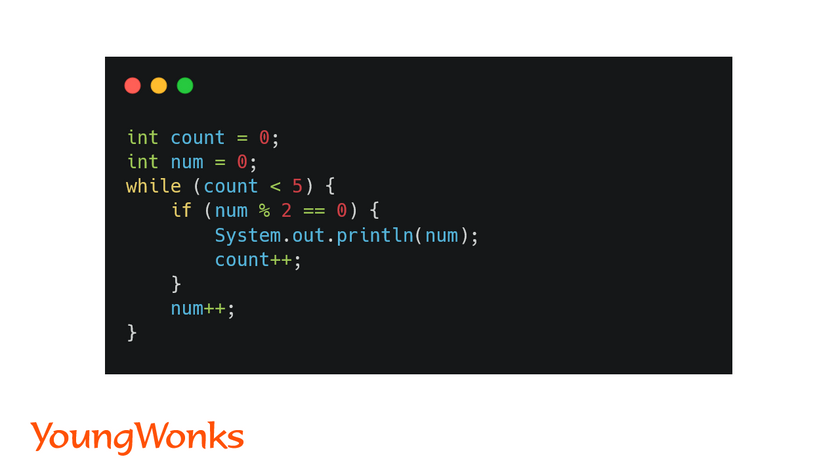
This unit on loops forms an integral part of the AP Computer Science A exam, contributing up to a whopping 22.5%!
Unit 5: Writing Classes
Object-oriented programming (OOP) is an important concept in Java and is used to create software applications that are easily maintainable, extensible, and secured. OOP organizes code into objects which contain related data and functions that can be used on the data. It also provides a structure for code organization, making it easier to work on large projects.
In this unit, students learn how to create and write object-oriented programs in Java. Classes provide the basis for OOP as they define the structure of objects and their behaviors. With static methods in Java, students can simplify their programming process by creating reusable blocks of code that are organized into classes. This allows for easier maintenance and extensibility as well as improved security. By learning how to write classes and use static methods correctly, students will know the essentials to create powerful software applications quickly and efficiently.
Unit 6: Array
Arrays in Java are objects that allow a programmer to store multiple values of the same type in a single data structure. An array is an efficient way of grouping related information together, and it is one of the most commonly used data structures in the Java programming language. Arrays are created with a specific length or size, meaning that once an array has been created, its size cannot be changed.
In this unit, students learn how to create and use arrays in Java. They also become familiar with important array operations such as searching, sorting, and manipulating elements. Additionally, they learn about multi-dimensional arrays which allow for the storage of data in a more organized manner. This unit can account for up to 15% of the AP Computer Science A exam, making it an essential part of a successful score.
Unit 7: ArrayList
An ArrayList in Java is a type of data structure that stores and manages an ordered list of objects. It behaves like an array, but is dynamic in size and can grow or shrink as needed. An ArrayList allows elements to be inserted, removed, searched, and sorted efficiently. Additionally, it offers fast random access to its elements due to the way it's structured internally.
In this unit, students learn how to use the ArrayList class to:
- Create ArrayList objects
- Add elements to ArrayList objects
- Access Elements in an ArrayList object
- Remove Elements from an ArrayList object
- Sort and Search in an ArrayList object
- Loop through an ArrayList using for loop and for each loop
Unit 8: 2D Array
A 2D array in Java is a type of data structure that allows for the storage and manipulation of a rectangular matrix of elements. It is an extension of the one-dimensional array, allowing for multiple rows and columns of elements to be stored in memory. The size of the 2D array must be specified when it is created, meaning that it cannot be changed once created.
In this unit, students learn the basics of working with 2D arrays in Java. They become familiar with important terms such as rows and columns, elements, indices, and how to access them. Additionally, they learn operations such as searching, sorting, inserting, and deleting elements from a 2D array. Finally, they become familiar with looping through a 2D array to access its elements.
Unit 9: Inheritance
Inheritance in Java is a concept that allows a class to be derived from another existing class. This involves the parent class passing on its attributes, behaviors, and properties to the child class. With inheritance, a child class can inherit data and methods from its parent class. It also allows for code reusability as the same code can be used in multiple classes.
In this unit, students learn the basics of inheritance and how it is implemented in Java. They'll become familiar with the different types of inheritance, such as single inheritance, multi-level inheritance, hierarchical inheritance, and hybrid inheritance. Additionally, they get to practice creating sub-classes and using the extends keyword. Furthermore, they learn about the importance of polymorphism and how it can be used to create code that is more efficient and easier to maintain.
Unit 10: Recursion
Recursion is a powerful programming technique that allows a programmer to solve complex problems by breaking them down into smaller, more manageable pieces. It can be used in many situations when dealing with large data sets or complicated tasks. By mastering recursion and understanding how it works, Java developers can create efficient algorithms for solving difficult challenges. With the right approach and implementation of recursion, students can write programs that are easier to debug and maintain over time.
An example of recursion is a function that computes the factorial of a number. A factorial is the product of all positive integers less than or equal to a given number. For example, the factorial of 5 is 5 x 4 x 3 x 2 x 1 = 120. The implementation for one of the algorithms to find the factorial of the given number is as follows.
Java code to find factorial of integer n:
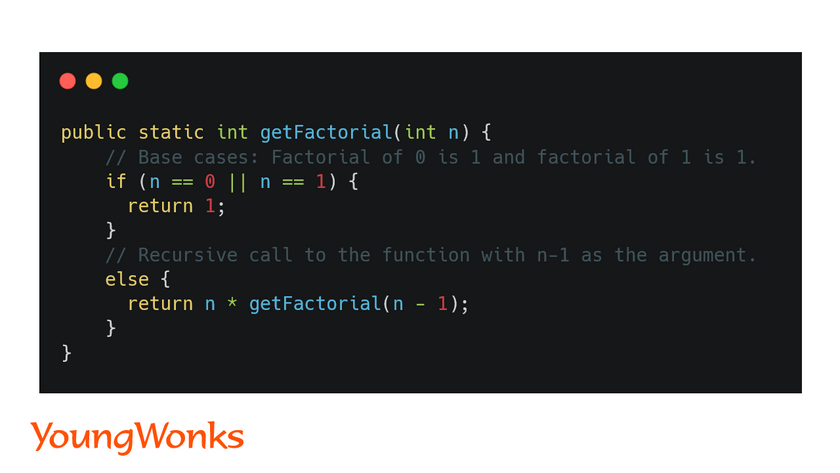
Can I teach myself Java?
Learning Python can be a great way to gain foundational knowledge that can help with learning Java. Python is a high-level language, meaning it offers more abstract features than Java, which makes it easier to conceptualize and understand programming concepts. Additionally, many of the core concepts present in Java are also present in Python, such as data types, objects, classes, and methods. Students who have experience in Python will find the transition to Java to be smoother and easier to comprehend.
Our Curriculum
The YoungWonks curriculum is a good fit for introductory college-level courses. It provides rigorous instruction and training to students in the basics of computer science programming and computing. It focuses on developing problem-solving skills in students through the use of Java, Python, and more.
At YoungWonks, we understand that learning Python can be a great way to develop foundational knowledge and skills that provide the perfect foundation for mastering Java. We offer online classes designed to challenge and engage students of all ages in the fundamentals of Python and Java programming. Our interactive and engaging classes are tailored to meet the needs of each student, allowing for the perfect learning environment.
We also have a comprehensive online learning platform that gives students the ability to access our course materials at any time, from anywhere. Our platform includes videos, tutorials, quizzes, and more to help bring each online course alive for students. We also provide practice problems and projects to give students hands-on experience with the concepts they're learning. Our 1:1 live online classes make sure that the student gets the complete attention of their teacher.
The YoungWonks Java AP CSA Online Coding Classes and Python Coding Classes for Kids and Youth are designed to enable computer science students to develop the skills and competencies necessary for success in college and beyond. So whether you're just starting, or looking to refine your skills, join us at YoungWonks and immerse yourself in the world of coding! We’re here to help you become a pro at Java, Python, and more.
*Contributors: Written by Rohit Budania; Lead image by Shivendra Singh
